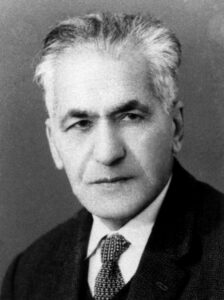
Muḥammad Labíb, the unknown photographer of the Holy Sites published in “The Dawn-Breakers”
Born: Approximately 1893
Death: March 14, 1981
Place of Birth: Yazd, Iran
Location of Death: Tihrán, Iran
Burial Location: Tihrán Bahá’í Cemetery destroyed in recent years
Among millions of Bahá’ís and Bábís who lived and left this ephemeral world, there are a great number who served this Faith selflessly, achieved tremendous work then traveled to the world beyond without any recognition and often without any trace! Fortunately, Muḥammad Labíb’s name came up while collecting documents for a project on the historical sites where the Báb stayed on His route to exile from Shiráz to Tihrán.
Muḥammad’s father known as Aṭṭár (Spice dealer), was a renowned Shaykhí before he joined the Bahá’í Faith. During the upheaval of Yazd in 1903, the population rose against the large Bahá’í Community of that city and Muḥammad’s parents were an obvious target of the mob. His father was expelled from the city and his shop and home were looted and demolished. His mother was beaten to the point of death by a crowd and thrown into a dark and damp prison for three days. Muḥammad who was only nine years old had to hide inside an underground water canal for several days sitting on the shoulders of his older brother until they found refuge in a friend’s house. He moved to Tihrán in 1905 since the family could not stay in Yazd. Muḥammad attended the Tarbíyat School for boys.
In early 1900, the Esperanto language became popular amongst the Persian Bahá’ís and ‘Abdu’l-Bahá encouraged the friends to learn it. Muḥammad showed a keen interest to learn and master this language. He moved to Qazvín, the birth place of Táhiríh, to teach at Tavakkul Bahá’í School in 1914. In 1916, he was nominated as the official representative of the World Esperanto Movement. While in Qazvín, he had a brilliant idea of establishing a Trust Fund in which the children attending his school could save money for their future life. He called it Nownahálán Company. (Nownahálán: this is a Bahá’í term used for youngsters) – When Muḥammad presented his idea of establishing such a company during his sixty days’ pilgrimage in 1919, ‘Abdu’l-Bahá gave His blessing and even contributed two gold coins as His ‘share’ in the company!
In later years, the company’s headquarters was established in Tihrán and operated for sixty-three years before it was confiscated by the current Iranian Government.
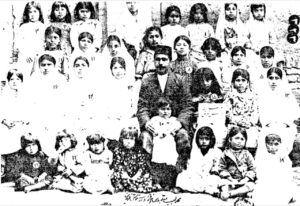
It seemed Muhammad’s keen interest in photography became apparent while onpilgrimage with his father in Haifa. Apparently, the Master had ordered a tent to be brought from India to Haifa. One day the tent was pitched near the Shrine of the Báb and some thirty pilgrims were invited to attend a feast. Shoghi Effendi was in Haifa during this period and asked permission from the Beloved Master to distribute sweets and fruits amongst the friends on behalf of the youngsters of Nownahálán Company. Late one afternoon, a photographer was called to take a photograph of the group in front of the Master’sHouse. Muhammad noticed that the photographer took two plates, one for backup in case the first one wasn’t good. Muhammad thought to have one of the plates with himself to keep at Nownahálán Company so he went with Shoghi Effendi to the photographer’s studio near the seashore and obtained the plate. While waiting for the photographer to come out from his lab, Muhammad spent a good deal of time studyingthe photographic equipment there.
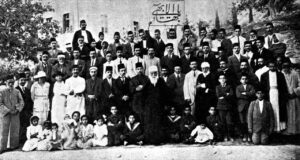
Photographic equipment in 1919 was bulky and glass plates were used instead of film and digital sensors of today; they were fragile and difficult to handle. With the invention of Celluloid, cameras became smaller and more manageable to travel with. Nevertheless, the still cameras and film size were large and needed a large enough trunk to carry them around. By 1930 roll films and 35 mm cartridge film cameras appeared in the market and Muhammad could easily travel using smaller cameras and take photographs during his many travel teaching expeditions all over Iran. It was during 1930 and1931 that the Guardian, Shoghi Effendi, requested Effi Baker to go to Persia and photograph the historical sites related to the early history of the Faith.
Muhammad already had the insight to visit and photograph all the Holy Sites in Persia. So he had prepared an invaluable photo album of the mentioned sites and was quite familiar with dangerous and hard to reach areasof the country. Later he prepared a detailed manuscript of over a thousand pages explaining the location and specific architectural details of all important Bahá’í sites associated with the Central Figures of the Faith.
Effie Baker (1880-1968) was an Australian photojournalist and the second Australian Bahá’í who accepted the Faith in
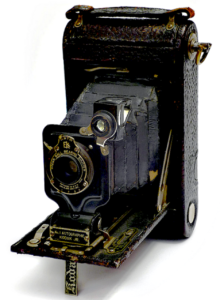
1922 while attending a public talk given by Hyde Dunn in Melbourne. It was during her nineteen days’ pilgrimage at the Holy Land in 1926 that Shoghi Effendi requested Effi to travel to Persia and take photographs of the Bahá’í Holy sites for His translation of the Dawn-Breakers. The Guardian was himself a keen photographer who took the 1919 photo of the Greatest Holy Leaf included as the frontispiece of Bahá’í World Volume V. Two or three days prior to her departure from Haifa, the Guardian mentioned that he wished Effie to photograph “as many relics of the Báb” as possible. She realized that it was necessary to take a second camera with her, one for wide shots and the other for close shots. The two cameras were Kodak No. 1 Autographic which used medium format Black and White roll films (6×9 cm).
Muhammad was the natural choice of the National Spiritual Assembly of Persia to accompany Effi Baker on her arduous and dangerous task. It took eight months to travel from North to South and East to West of that vast country to cover the most important locations. Some of his photographs along with the ones taken by Effi, illustrate the pages of Nabil’s Narrative, the Dawn-Breakers.
Following a dream and encouraged by the Master, ‘Abdu’l-Bahá, Muhammad traveled to Japan and settled in Hiroshima, 44 years after his pilgrimage. He taught Esperanto there and used that language as his only means of communication with friends. He managed to establish the first Local Spiritual Assembly in that city in 1955. Later in 1963 he pioneered to Rhodes Island and taught the Faith there. Esperanto was the only language he used during most of his pioneering!
Muhammad is the author of a large number of works dealing with the history of the Faith and copiously illustrated with his photographs. ‘The Seven Martyrs of Hormozak’ in the only book which is translated into English and published in 1981.
Although blind and physically infirm during the last years of his life, Muhammad Labib retained an active mind until his passing on March 14, 1981. A cable from the Universal House of Justice dated March 23 eulogizes Muhammad’s many services to the Faith:
SADDENED NEWS PASSING DEVOTED SERVANT SACRED THRESHOLD MUHAMMAD LABIB. HIS DEDICATED LONG STANDING RECORD SERVICES IRAN REMEMBERED WITH DEEP LOVE APPRECIATION. ASSURE RELATIVES FERVENTLY PRAYING SHRINES PROGRESS HIS SOUL ABHA KINGDOM.
Source:
The Bahá’í World, Volume XIV (1963-1968), The Universal House of Justice, 1974
The Bahá’í World, Volume XVIII (1979-1983), Bahá’í World Centre, 1986
Muhammad Labib, The Seven Martyrs of Hurmozak, typed manuscript, 112 B.E. – English translation published by George Ronald, Oxford, 1981
Muhammad Labib, Memories of sixty days visit with Abdu’l-Bahá, typed manuscript, 1919
Oficiala Jarlibro de la Esperanto-movado, 1920
Iran Esperantisto, No. 9, autumn 2004
Graham Hassall, Ambassador at the Court, 1999
Images:
Bahá’í World Centre
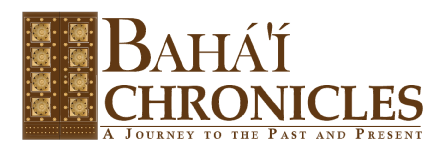
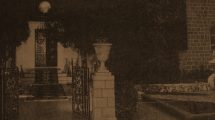
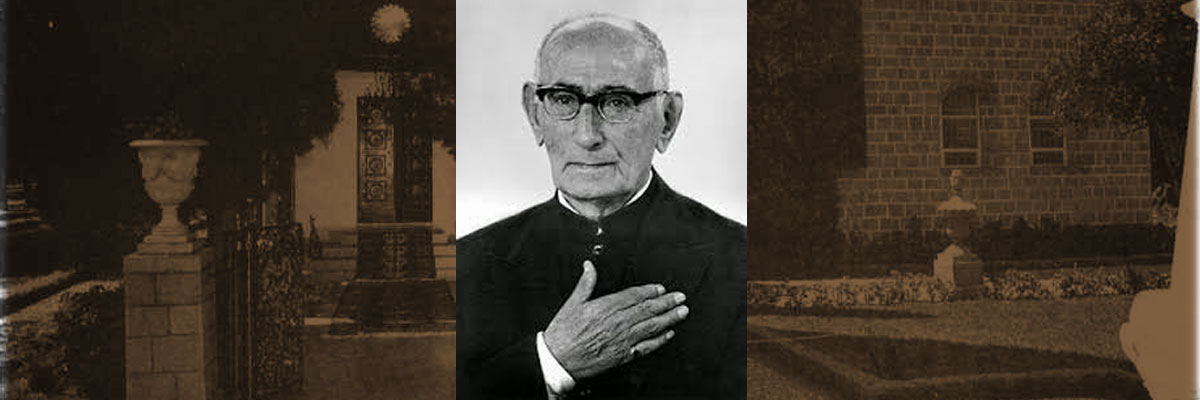
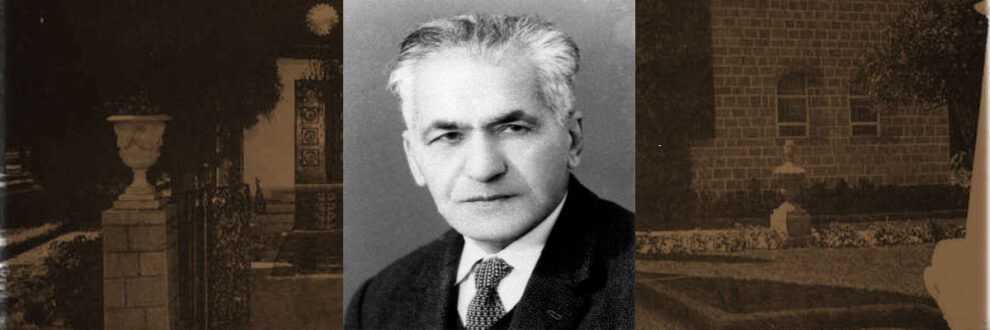

It’s an A1 job you’ve done on Labib and it’s especially important in that there are few outstanding Baha’is of Iranian extraction who have served the Faith in a big way by means of Esperanto. Persian Baha’i Esperantists though have been outstanding champions re the principle of a universal auxiliary language. One Baha’i Esperantist from Iran even accompanied the Master in N America as a young man as His interpreter and later became a founding member of the House: Lutfullah Hakim.
Habib, who was the older brother of the renowned writer, Adib, tirelessly worked for both movements. Muhammad Labib and Dr. Lutfu’lláh Hakím established in Kazvin and Teheran some of the largest Esperanto classes ever held anywhere, i.e. a record until a remarkable renaissance of the International Language there in the early 1980’s when the Iranian government started training 650 school teachers in the Esperanto language en route to Esperantizing the entire school system.
I have a remarkable photo of Esperanto classes in Teheran during World War 1 in that Baha’i women from America are the teachers and various notables including a prince are their students.
The secretary of the Baha’i Esperanto league (Bernhard Weterhoff) who is an officer of the Faith based in Frankfurt has advised that one other Baha’i Esperantist of Iranian provenance worked tirelessly in both movements but I’ve lost the info in my computer, sorry
It’s an A1 job Golgasht and Neda have done on Labib and it’s especially important in that there are few outstanding Baha’is of Iranian extraction known to the west who have served the Faith in a big way by means of Esperanto. Various Persian Baha’i Esperantists though have been outstanding champions re the principle of a universal auxiliary language. One Baha’i Esperantist from Iran even accompanied the Master in N America as a young man as His interpreter and later became a founding member of the House: Lutfullah Hakim.
The Universal House of Justice in its letter of October 20th 1997 at the time of the Universal Congress of Esperanto in Adelaide was most appreciative of the mainly Persian Baha’i assistance that made it an outstanding success: “It is clear that the Bahá’ís participating in this event were most effective in taking advantage of the opportunities it provided for the proclamation of the Faith ”
Habib, who was the older brother of the renowned writer, Adib Taherzadeh, tirelessly worked for both movements. Muhammad Labib and Dr. Lutfu’lláh Hakím established in Kazvin and Teheran some of the largest Esperanto classes ever held anywhere, i.e. a world record until a remarkable renaissance of the International Language (aka Esperanto) occurred in Iran in the early 1980’s when the new regime started training 650 school teachers in the Esperanto language en route to Esperantizing the entire school system! Absolutely amazing given that Dr Zamenhof was a Jew!
A FARSI VERSION OF GOLGASHT’S ARTICLE WOULD BE BENEFICIAL.
I have a moving photo of Esperanto classes in Teheran during World War 1 which is remarkable in that Baha’i women from the west feature and various notables including a prince are their students.
Bernhard Westerhoff who is the secretary of the Baha’i Esperanto League (BEL) based at the NSA in Frankfurt – from where he reports on BEL’s activities directly to the Universal House of Justice – has advised that one other Baha’i Esperantist of Iranian provenance wrote copiously for both movements but I’ve lost the info in my computer, sorry.
t’s an A1 job Golgasht and Neda have done on Labib and it’s especially important in that there are few outstanding Baha’is of Iranian extraction known to the west who have served the Faith in a big way by means of Esperanto. Various Persian Baha’i Esperantists though have been outstanding champions re the principle of a universal auxiliary language. One Baha’i Esperantist from Iran even accompanied the Master in N America as a young man as His interpreter and later became a founding member of the House: Lutfullah Hakim.
The Universal House of Justice in its letter of October 20th, 1997 at the time of the Universal Congress of Esperanto in Adelaide was most appreciative of the mainly Persian Baha’i assistance that made it an outstanding success: “It is clear that the Bahá’ís participating in this event were most effective in taking advantage of the opportunities it provided for the proclamation of the Faith ”
Habib, who was the older brother of the renowned writer, Adib Taherzadeh, tirelessly worked for both movements. Muhammad Labib and Dr. Lutfu’lláh Hakím established in Kazvin and Teheran some of the largest Esperanto classes ever held anywhere, i.e. a world record until a remarkable renaissance of the International Language (aka Esperanto) occurred in Iran in the early 1980’s when the new regime started training 650 school teachers in the Esperanto language en route to Esperantizing the entire school system! Absolutely amazing given that Dr Zamenhof was a Jew!
A FARSI VERSION OF GOLGASHT’S ARTICLE WOULD BE BENEFICIAL.
I have a moving photo of Esperanto classes in Teheran during World War 1 which is remarkable in that Baha’i women from the west feature and various notables including a prince are their students.
Bernhard Westerhoff who is the secretary of the Baha’i Esperanto League (BEL) based at the NSA in Frankfurt – from where he reports on BEL’s activities directly to the Universal House of Justice – has advised that one other Baha’i Esperantist of Iranian provenance wrote copiously for both movements, but I’ve lost the info in my computer, sorry.